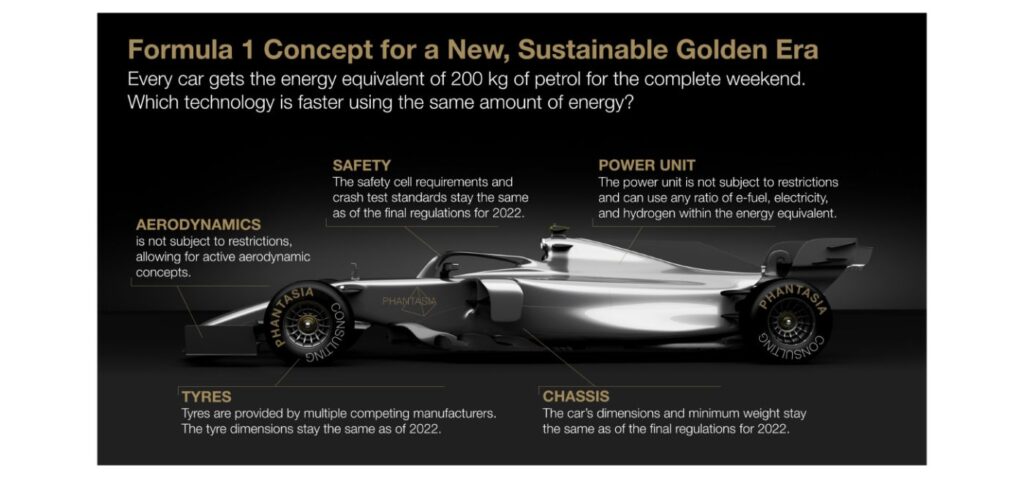For years now, I have felt that Formula 1 needs a rule set which provides almost limitless technological freedom, with the caveat of a strict budget cap and safety standards. In fact, I recall Pat Symonds, at a Formula Student event many moons again, saying something along the lines of “give us a budget and a box to design the car in, leave the rest up to us”.
Now, the aptly named Phantasia Consulting, a German marketing agency, has proposed a direction for the 2026 F1 rules that follows this line of thinking, albeit with some refinement. Now, some may scoff at a marketing agency getting involved in rules, but remember, racing is very much a form of mass market entertainment, the crux being that fans do like technology (something F1 has acknowledged with its own pre-Grand Prix tech shows, which have proved very popular).
In among some florid language about the golden eras of racing, the core of Phantasia’s proposal is that F1 should be a straight fight of who can go the fastest with the same amount of energy. In this case, the equivalent of 200kg of gasoline for the whole weekend (50kg for practice, 50kg for qualifying and 200kg for the race), with teams free to use ICE, hydrogen (they do not specify fuel cell or ICE), electric or any combination of the above. Refueling in races would not be allowed. Budgets would be capped at US$135m per year, and any powertrain manufacturer must make its system available to anyone on the grid for US$15m.
The proposal also suggests that aerodynamic development and design should be unconstrained. Of course, the argument against this (beyond development cost, which is negated by a budget cap) is that cars would become too fast for tracks and safety equipment. Phantasia’s solution is simple: cut the energy allowance if this becomes the case. The case for aerodynamic freedom is that it would push aero efficiency, which could produce transferable knowledge for mainstream automotive. Tire supply would also be open, with the exception of wets, which would be a spec item from a single supplier.
Of course, there are many potential flaws in such a seemingly simple plan. The intent is to make F1 a crucible for development of sustainable technology development. However, left to their own devices, engineers will simply go for the fastest option. In the near term, and with the energy allowance essentially unchanged, this would be ICE. However, with some tweaks, development of EV and hybrid technology could be encouraged.
Overall, the proposal is likely what many engineers (if they were unconstrained by political and business factors) would love to see. F1 should be the pinnacle of automotive technology and an accelerator for developments that will benefit the automotive industry and society as a whole. The means of achieving this is certainly not through ever more restrictive regulation.



